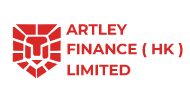Unleash Growth: No-Fail Business Finance & Loans Guide 2025

Economic Trends 2025: Challenges & Opportunities for Growth
April 11, 2025
5 Bold SBLC for Business Expansion Strategies to Win
April 17, 2025Unleash Growth: No-Fail Business Finance & Loans Guide 2025
Strategic Capital for Sustainable Growth
Business finance & loans drive entrepreneurial success. Securing capital fuels growth, streamlines operations, and unlocks opportunities. Companies rely on funding to manage cash flow, invest in equipment, or expand markets. Understanding financing options empowers business owners to make informed decisions. This article explores loan types, application processes, and strategic financial planning, equipping you with tools to navigate the complex world of business funding. From startups to established firms, mastering business finance ensures long-term sustainability.
Understanding Business Finance & Loans
Business finance encompasses managing funds to achieve organizational goals. It involves budgeting, forecasting, and securing capital. Effective financial management aligns resources with strategic objectives, ensuring operational efficiency. Companies use financing to cover expenses, invest in innovation, or scale operations. Without proper funding, even promising ventures risk stagnation.
Loans represent a critical component of business finance. They provide immediate capital, repaid over time with interest. Businesses access loans to address short-term needs or long-term investments. Selecting the right loan requires evaluating terms, rates, and repayment schedules. Missteps in financing decisions can strain cash flow, so precision matters.
Types of Business Loans
Businesses access various loan types tailored to specific needs. Each option offers unique terms, eligibility criteria, and purposes. Below, explore common loan categories:
Term Loans
Term loans provide a lump sum, repaid over a fixed period. Businesses use them for equipment purchases, expansion, or working capital. Interest rates vary based on creditworthiness and lender policies. Repayment terms typically range from one to ten years.
SBA Loans
The U.S. Small Business Administration (SBA) guarantees loans, reducing lender risk. SBA loans offer competitive rates and flexible terms, ideal for startups or small businesses. Programs like the 7(a) loan support working capital, while the 504 loan funds real estate or equipment. Eligibility requires meeting SBA size standards and demonstrating repayment ability.
Lines of Credit
A business line of credit provides flexible access to funds up to a set limit. Companies draw funds as needed, paying interest only on the amount used. This option suits managing cash flow fluctuations or unexpected expenses. Lines of credit often renew annually, subject to lender approval.
Equipment Financing
Equipment financing funds machinery, vehicles, or technology purchases. The equipment serves as collateral, simplifying approval for businesses with limited credit history. Terms align with the equipment’s useful life, typically three to seven years.
Invoice Financing
Invoice financing advances funds against unpaid invoices. Businesses receive immediate cash, improving liquidity while awaiting client payments. Lenders charge fees, often 1-5% of the invoice value, depending on payment terms.

Securing business finance & loans with Artley Finance (HK) Limited
Loan Application Process
Applying for a business loan demands preparation. Lenders assess creditworthiness, revenue, and repayment capacity. A streamlined approach increases approval odds. Follow these steps:
- Evaluate Needs: Determine the loan amount and purpose. Overborrowing strains cash flow, while underfunding limits growth.
- Research Lenders: Compare banks, credit unions, and online lenders. Review rates, terms, and eligibility criteria.
- Gather Documentation: Prepare financial statements, tax returns, and business plans. Lenders require proof of revenue and operational stability.
- Submit Application: Complete forms accurately. Errors delay processing or lead to rejection.
- Negotiate Terms: Discuss rates and repayment schedules. Strong credit may secure better conditions.
Approval timelines vary, ranging from days for online lenders to weeks for traditional banks. Maintaining a strong credit profile accelerates the process.
Strategic Financial Planning
Effective financing aligns with broader financial strategies. Businesses must balance debt with revenue generation. Overleveraging risks insolvency, while underfunding stifles growth. Consider these principles:
- Cash Flow Management: Monitor inflows and outflows. Loans supplement cash flow, not replace it.
- Debt-to-Income Ratio: Lenders evaluate this metric. A ratio below 36% signals financial health.
- Investment Return: Ensure loan-funded projects yield returns exceeding borrowing costs.
- Contingency Planning: Maintain reserves for unexpected downturns. Loans should not substitute emergency funds.
Integrating loans into financial planning enhances stability. Businesses thrive when funding supports measurable outcomes.
Scaling a Retail Business
In 2023, a family-owned retail store in Ohio faced declining sales due to outdated inventory systems. The owner, Jane Carter, sought a $100,000 SBA 7(a) loan to upgrade technology and renovate the storefront. After submitting financial statements and a business plan, Jane secured approval within three weeks. The loan’s 5% interest rate and 10-year term aligned with her cash flow projections.
Post-funding, Jane implemented a point-of-sale system, boosting efficiency by 30%. Renovations attracted new customers, increasing revenue by 25% within six months. Jane’s strategic use of financing transformed her business, proving the value of targeted loan applications.
Case Study: Tech Startup Growth
Company: InnovateTech, a SaaS startup
Challenge: Limited capital to hire developers and market software
Solution: $250,000 line of credit
Outcome: Tripled revenue in 18 months
InnovateTech, founded in 2021, developed a cloud-based analytics platform. By 2022, demand surged, but cash flow constrained hiring and advertising. The founders applied for a line of credit from an online lender, citing strong sales projections. Approved for $250,000, they drew funds incrementally to hire three developers and launch a digital campaign.
The investment paid off. New features accelerated user adoption, and marketing expanded their client base by 40%. By mid-2023, InnovateTech’s revenue tripled, enabling early repayment of the credit line. This case underscores how flexible financing fuels rapid growth.
To deepen your understanding of business financing, explore resources from trusted platforms. The U.S. Chamber of Commerce offers a comprehensive guide on loan options, application tips, and lender comparisons.
FAQ:
What qualifies a business for an SBA loan?
Eligibility for SBA loans requires operating as a for-profit entity, meeting size standards, and demonstrating repayment ability. Lenders also assess credit history and business stability.
How does a line of credit differ from a term loan?
A line of credit offers flexible access to funds up to a limit, with interest paid only on amounts drawn. A term loan provides a lump sum, repaid over a fixed schedule.
What documents are needed for a business loan application?
Lenders typically require financial statements, tax returns, a business plan, and proof of revenue. Specific requirements vary by lender and loan type.
Can startups secure business loans?
Yes, startups can access loans, though options like SBA loans or lines of credit often require at least six months of operation and strong personal credit.
How long does loan approval take?
Approval timelines range from 1-3 days for online lenders to 2-4 weeks for banks or SBA loans, depending on documentation and lender processes.
Optimizing Loan Selection
Choosing the right loan hinges on aligning terms with business needs. Short-term loans suit immediate expenses, while long-term options fund major investments. Interest rates, influenced by credit scores and market conditions, impact total costs. Fixed rates provide predictability; variable rates may lower initial payments but carry risks.
Businesses must also consider collateral requirements. Secured loans, backed by assets, often offer lower rates. Unsecured loans, while riskier for lenders, require stronger credit profiles. Weighing these factors ensures financing supports growth without compromising stability.
Managing Loan Repayments
Repaying loans demands discipline. Businesses should:
- Automate Payments: Ensure timely payments to avoid penalties.
- Monitor Cash Flow: Allocate revenue to cover installments without disrupting operations.
- Refinance if Needed: Lower rates or extended terms can ease burdens.
- Communicate with Lenders: Proactively address payment challenges to negotiate solutions.
Effective repayment preserves creditworthiness, enabling access to future financing.
Trends in Business Financing
Fintech platforms now streamline loan applications, offering approvals in hours. Alternative lenders provide options for businesses with imperfect credit, though rates may be higher. Crowdfunding and peer-to-peer lending also gain traction, diversifying funding sources. Staying informed about these trends empowers businesses to capitalize on emerging opportunities.
Business finance and loans form the backbone of entrepreneurial growth. From term loans to lines of credit, each option serves distinct needs. Strategic planning, precise applications, and disciplined repayments maximize benefits. Real-world examples, like Jane Carter’s retail success, and case studies, such as InnovateTech’s growth, illustrate financing’s transformative power. By aligning loans with business goals, companies unlock potential while maintaining stability. #BusinessFinance #SmallBusinessLoans #FinancialPlanning
Contact Artley Finance HK Limited Today For Leased Bank Instruments, Non-Recourse Loans, Bank Guarantees, Standby Letters of Credit & BG/SBLC Monetization
Take the first step toward financial success now! #LoanSolutions #GrowYourBusiness
Email us: finance@artleyfinance.com
Visit our website: www.artleyfinance.com




